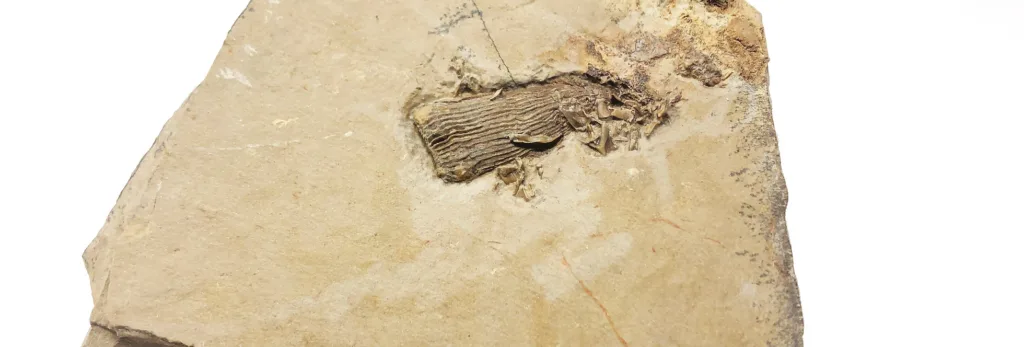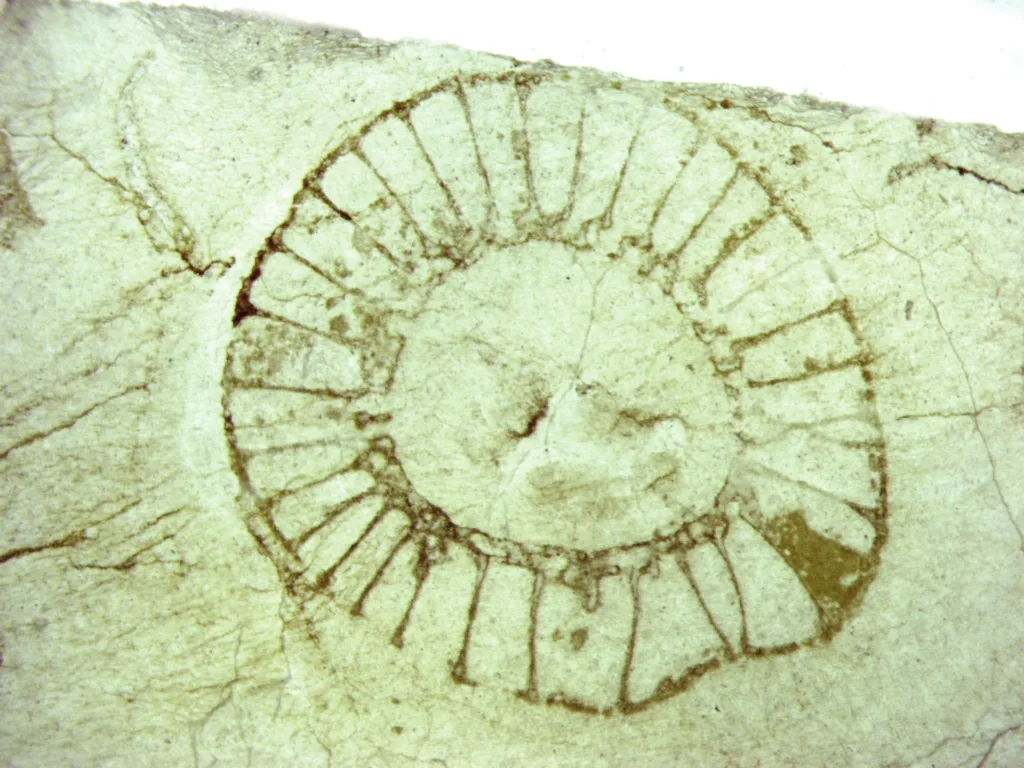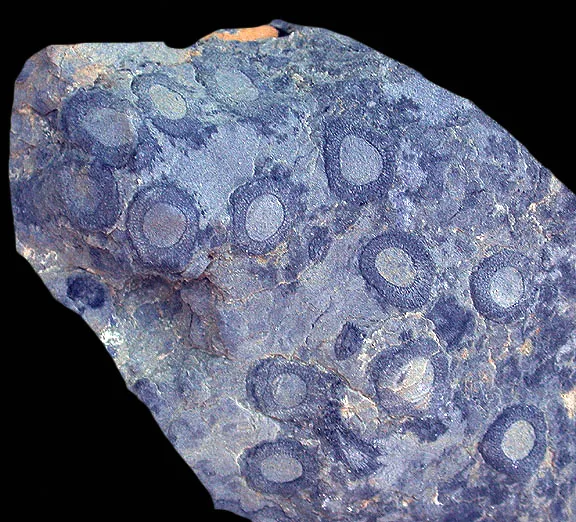Archaeocyathids are an extinct group of marine organisms that lived during the early Cambrian period, approximately 541 to 485 million years ago. They are considered to be one of the earliest known forms of multicellular animals and played an important role in the early evolution of life on Earth. Archaeocyathids are classified within the phylum Porifera, which includes modern-day sponges.




Archaeocyathids were sessile organisms, meaning they were attached to the seafloor and did not have the ability to move. They had a unique skeletal structure consisting of calcareous tubes or cones, which formed intricate and often reef-like structures. These structures were composed of multiple chambers connected by pores and channels, and they could grow to considerable sizes, reaching up to several meters in height.
The archaeocyathid body plan was characterized by a central cavity, called the calyx, surrounded by a series of concentric rings or walls. The walls contained numerous small pores that allowed water to flow through the organism for feeding and respiration. It is believed that archaeocyathids were filter feeders, extracting organic particles and nutrients from the water using specialized cells.
The fossil record of archaeocyathids is primarily composed of their skeletal remains, which are often well-preserved due to the calcareous nature of their structures. These fossils provide valuable insights into the ecology and evolution of early marine ecosystems. Archaeocyathids were widely distributed across shallow marine environments, particularly in tropical and subtropical regions, and their fossils have been found on all continents.
The exact biological affinities of archaeocyathids have been a subject of debate among scientists. Some studies suggest that they were early relatives of modern sponges, while others propose that they represent an extinct lineage that occupied a unique evolutionary position. Regardless, archaeocyathids played a significant role in the early development of complex life forms, and their decline and eventual extinction are thought to be linked to environmental changes and competition with other organisms.
Studying archaeocyathids provides valuable insights into the early diversification of animal life and the ancient marine ecosystems of the Cambrian period. Their fossils serve as important markers for dating and correlating rock formations, aiding in the understanding of Earth’s geological history and the emergence of complex life forms.
Archaeocyathids Geological time period (Cambrian)
Archaeocyathids, as mentioned earlier, existed during the Cambrian period, which lasted from approximately 541 to 485 million years ago. Now let’s discuss the importance of archaeocyathids in paleontological research:
- Early Animal Evolution: Archaeocyathids represent one of the earliest known forms of multicellular animals, providing valuable insights into the early evolution of complex life forms on Earth. Their existence during the Cambrian period, known for the “Cambrian explosion” of diverse animal life, highlights their role in the early development of animal biodiversity.
- Evolutionary Relationships: Archaeocyathids occupy a significant position in the evolutionary tree of life. Although their exact biological affinities are still debated, they are generally considered to be related to modern-day sponges within the phylum Porifera. The study of archaeocyathids helps scientists understand the relationships between early animal groups and their evolutionary trajectories.
- Ecological Interactions: The fossilized structures of archaeocyathids provide valuable information about ancient marine ecosystems during the Cambrian period. The reef-like structures created by archaeocyathids served as habitats for other organisms and influenced local biodiversity. By studying these structures, scientists gain insights into ecological interactions, including predator-prey relationships and the interplay between different species.
- Environmental Reconstruction: The presence of archaeocyathids in the fossil record helps paleontologists reconstruct ancient environments. These organisms were primarily marine and preferred shallow, warm-water environments. The distribution of archaeocyathid fossils across different regions provides clues about paleogeography and ancient sea levels during the Cambrian period.
- Stratigraphic Markers: The occurrence of archaeocyathids in specific rock layers serves as an important stratigraphic marker. These fossils can be used to date and correlate sedimentary rocks, assisting in the establishment of regional and global geological timescales. The presence or absence of archaeocyathids in a particular rock unit helps geologists understand the relative ages and relationships of different sedimentary sequences.
In summary, archaeocyathids hold significance in paleontological research as they provide insights into early animal evolution, evolutionary relationships, ancient marine ecosystems, and environmental reconstructions. Their fossils aid in the dating and correlation of rock formations, contributing to our understanding of Earth’s geological history during the Cambrian period.
Archaeocyathids Fossil Record and Geological Significance
The fossil record of archaeocyathids holds great geological significance and provides valuable insights into Earth’s history. Here’s a closer look at the fossil record and the geological significance of archaeocyathids:
- Stratigraphy and Relative Dating: Archaeocyathid fossils are important for stratigraphic correlation and relative dating of rock formations. These fossils have distinct ranges in time, allowing paleontologists to identify specific intervals within the geological record. By examining the presence or absence of archaeocyathids in different sedimentary layers, scientists can establish relative ages and create stratigraphic sequences.
- Paleoenvironmental Reconstruction: The presence of archaeocyathids in the fossil record helps reconstruct ancient marine environments. These organisms were primarily reef builders, and their fossils provide evidence of past reef structures. By analyzing the distribution and characteristics of archaeocyathid reefs, scientists can infer paleoenvironmental conditions such as water depth, temperature, and nutrient availability during the Cambrian period.
- Paleogeography and Tectonic Reconstructions: Archaeocyathids have a limited geographic distribution, and their fossils can be used to reconstruct past paleogeographic maps. The occurrence of archaeocyathids in different regions helps scientists understand the connectivity and separations of ancient landmasses during the Cambrian period. This information contributes to our understanding of plate tectonics and the movement of Earth’s continents.
- Biostratigraphy and Chronostratigraphy: The presence of archaeocyathids in specific sedimentary layers allows for biostratigraphic and chronostratigraphic correlations. By identifying and dating the fossils, scientists can establish the relative ages of rocks and develop a regional or global geological timescale. This information helps in understanding the temporal relationships of different geological events and the evolution of life during the Cambrian period.
- Evolutionary Significance: Archaeocyathids represent an early branch of animal evolution and provide important data on the diversification and evolution of early marine life. The study of archaeocyathids helps fill gaps in our knowledge of early animal evolution, providing insights into the origins and relationships of different animal groups.
In summary, the fossil record of archaeocyathids plays a crucial role in geological research. It aids in stratigraphic correlation, paleoenvironmental reconstructions, paleogeographic analyses, and the development of geological timescales. Additionally, the fossils contribute to our understanding of early animal evolution and the history of life on Earth during the Cambrian period.
FAQ
What are archaeocyathids?
Archaeocyathids are extinct marine organisms that lived during the early Cambrian period, approximately 541 to 485 million years ago. They are considered one of the earliest known multicellular animals and are classified within the phylum Porifera, which includes modern-day sponges.
What did archaeocyathids look like?
Archaeocyathids had a unique skeletal structure composed of calcareous tubes or cones. They formed intricate and often reef-like structures, with multiple chambers connected by pores and channels. The structures could reach several meters in height.
Where were archaeocyathids found?
Archaeocyathids were widely distributed in shallow marine environments during the Cambrian period. Fossils of archaeocyathids have been discovered on all continents, indicating a global presence.
What was the ecological role of archaeocyathids?
Archaeocyathids were sessile organisms, meaning they were attached to the seafloor and could not move. They were filter feeders, extracting organic particles and nutrients from the water using specialized cells. Their reef-like structures provided habitats for other organisms, influencing local biodiversity and ecological interactions.
What is the significance of archaeocyathids in understanding early animal evolution?
Archaeocyathids hold importance in the study of early animal evolution. They represent one of the earliest known forms of multicellular animals and provide insights into the early development of complex life forms during the Cambrian period. By studying archaeocyathids, scientists can better understand the origins and relationships of different animal groups.
What led to the extinction of archaeocyathids?
The exact reasons for the extinction of archaeocyathids are still debated. Environmental changes, such as shifts in sea level, ocean chemistry, and competition with other organisms, are among the factors believed to have contributed to their decline and eventual extinction.
How are archaeocyathids studied by paleontologists?
Paleontologists study archaeocyathids by examining their fossilized remains. This involves careful collection, preparation, and analysis of the fossils. The fossil record of archaeocyathids provides valuable information about their morphology, ecology, and evolutionary relationships.
Can archaeocyathids be found in museums?
Yes, fossils of archaeocyathids can be found in museum collections worldwide. Museums with extensive paleontological collections often have displays or exhibits featuring archaeocyathid fossils, allowing visitors to learn about these ancient organisms and their significance in Earth’s history.




































